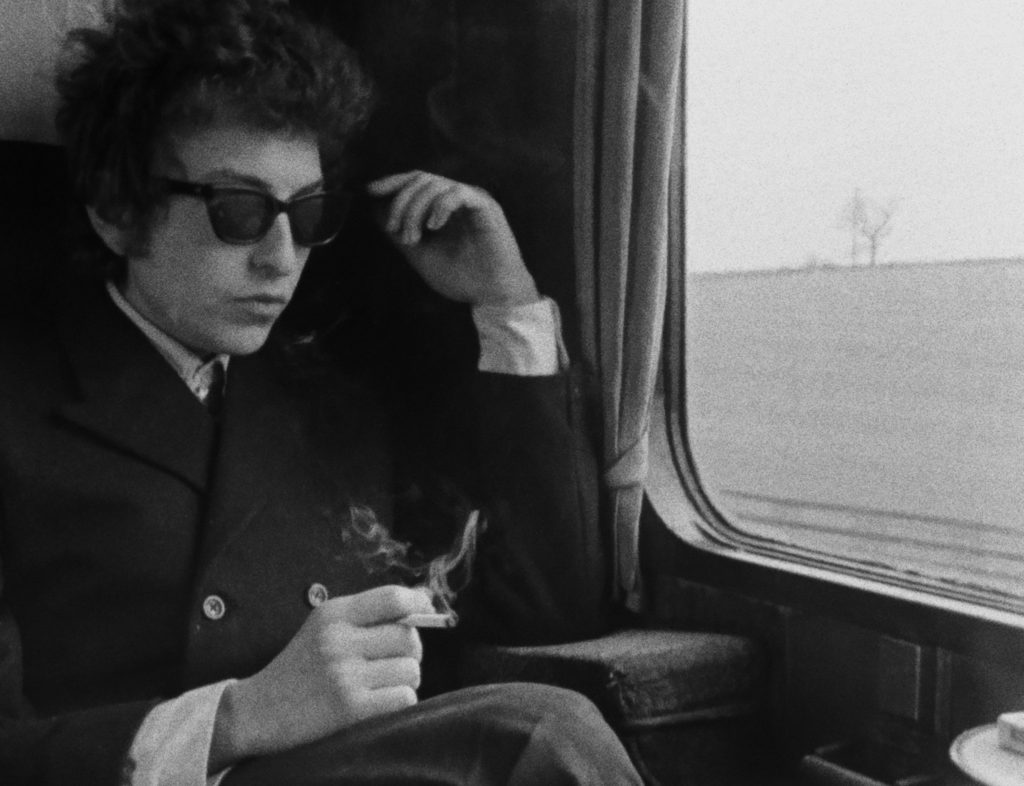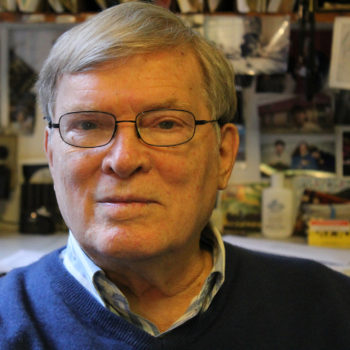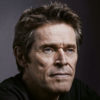Back in the 1950s, D.A. Pennebaker was a pioneer of “direct cinema”– documentaries that tried to capture reality unobtrusively, as it happened. In fact, he helped design the sync-sound cameras that made that style even possible.
Pennebaker went on to direct some of the most cherished rockumentaries ever, including the classic concert film “Monterey Pop.” With his wife, Chris Hegedus, he co-directed the Oscar-nominated “The War Room,” about Bill Clinton’s first Presidential campaign. He just celebrated the 50th anniversary of his Bob Dylan doc, “Dont Look Back,” with a first-of-its-kind gallery show at the Morrison Hotel Gallery at the Sunset Marquis Hotel in Los Angeles (via which you can even buy a few photos, if you’re looking to invest in some history).
Pennebaker and Hegedus’ new film, “Unlocking the Cage,” is currently in theaters and coming to HBO. It’s about lawyer Steve Wise’s struggle for animal rights.
When Rico talked with D.A., the 91-year-old filmmaker first told him how he picks his projects.

D.A. Pennebaker: Well, unlike a proper scholar or a writer or a painter, I don’t think up an idea and then set out to make a film about it. Usually, I respond to somebody’s inquiry or visit, in which they tell me about something that they thought would make a good film. And if it’s interesting and I can figure out how to do it — that is, how to get the money that will be needed to make it — that’s how the film gets done. That’s where it comes from.
And if somebody calls up and says, “Would you like to make a film in California about a concert?” back in the mid-‘60s… And I think, you know, “Every person who graduated from high school this year, the one thing in their mind is how to get to California…” well, of course that’s a good place to go to make a film about a concert!
Rico Gagliano: So I guess that’s what caught your fancy about making “Monterey Pop.” But what about this film? What was attractive to you about this idea?
D.A. Pennebaker: Well, what I know about law is limited pretty much to parking tickets. And it’s very hard to argue about one. You know, you pay it. The law is intractable. It’s the way it is and you accept it.
I think that [protagonist, animal rights lawyer] Steve Wise going into a court and citing common law in order to have animals perceived as legal persons… that does not seem to me a welcoming aspect of the law. I’m kind of impressed by his courage in even deciding to do it. I mean, I think that takes a certain kind of resilience that I find very winsome.
Rico Gagliano: Is that maybe the through-line between your documentaries? Because you’re known for your rock documentaries. A few years back, you did a pretty delightful documentary about a pastry competition in France. Now you’ve got an animal rights film. Is that the through-line? Watching people you’re fascinated by overcoming adversity?
D.A. Pennebaker: I think that I watch people that I admire. And particularly musicians. Because musicians are to me, and always have been, really interesting… in that that’s all they do! And no matter how much you want to be a musician and how much you want to be part of a band, if you didn’t have whatever that skill is or that talent, you couldn’t do it! No matter how hard you tried.
So the idea of people that are able to do that and know that about themselves… that’s a saint-like quality for me. And when I see them performing, I kind of love them. I want to film them so that film will show people how good they could be.
Rico Gagliano: This is a great segue into talking a little more about some of the rock-docs you’re known for. One of them, of course, I’d be remiss to not mention is Bob Dylan in “Dont Look Back.” This is a movie in which Dylan notoriously comes across as… let’s say prickly.
D.A. Pennebaker: Well, you know, some people say “he’s a shit,” and some people say “I love him.” But, that’s the way it is if you did it with Albert Einstein! People’d say, “That old fogey! What is he talking about?” And there are people that have said that!
Rico Gagliano: But, interestingly, you later did a re-cut of that film in which Dylan actually comes across as much nicer. So which is the truth?
D.A. Pennebaker: Well, the fact is that I’d been living with “Dont Look Back” for a long time and I hadn’t thought a lot about it. But a guy who came to work for me, who I was very fond of, said one day that he was looking at the outtakes, and he said, “I think you made the wrong film.”
I said, “Yeah? Oh, thanks a lot!” And he said, “Well I want you to look at just some stuff I’ve got here.” So I looked at it, and I could see I had avoided having a whole song [in “Dont Look Back”]. I don’t think there’s a whole song in the film. There might be but…
Rico Gagliano: Yeah, you don’t show an entire song performance by Dylan at all.
D.A. Pennebaker: Well, because I got interested in the way Dylan used words. I had read Quennell’s collection of letters that Byron wrote that were to Byron, and from Byron…
Rico Gagliano: The great poet.
D.A. Pennebaker: …Well, he was a good poet. They’re good poems, but more than that, he was an interesting talker. And Dylan had that quality. It got me interested in filming him talking to people. So… I decided I was going to make a talking film about this guy.

Rico Gagliano: But then you make this re-cut of the film…
D.A. Pennebaker: Well, in the retread he sings whole songs. And I listened to the songs and I thought, “Holy shit, maybe I did make the wrong film!” Because when you hear the songs all the way through, they’re kind of wonderful. So I put them all together, and sure enough, it was a kinder, gentler Dylan that appeared. And that’s OK. He can be both. Both of them deserve to exist.
Rico Gagliano: You actually close this latest film with a Dylan tune. Are you two still very much in touch?
D.A. Pennebaker: Yeah, but we don’t spend a lot of time socially. He never gets off the stage, as far as I can see. I see his kids sometimes, and they think of the film as kind of the home movie of the family! So they watch it once in awhile.
You know, he’s never really gone into detail his feelings about the film, because I don’t think he probably knows from one day to the next quite what they are. And that’s kind of the way he is; whatever he tells you at breakfast is probably not going to hold up at lunch. So you kind of live with that when you spend time with him. But that’s not objectionable.
Rico Gagliano: Finally, I want to ask you about one of my favorite scenes in all of your movies. It’s at the end of “Monterey Pop,” which is your document of the legendary concert at which many of the best bands of the ‘60s first met and played together. That movie ends with a performance by the Indian sitar player Ravi Shankar.
He’s playing a kind of music most of the Americans in the audience have never heard before and it just totally blows their minds. Whenever I’m in a bad mood, I put on that scene and it makes me smile just watching the audience explode in joy at the end of Ravi’s performance. Tell me what you remember of shooting that scene.
D.A. Pennebaker: Well, I didn’t shoot it! You’ve got to understand that when I started to do that film, I thought, “What the hell… I don’t know how to direct as a single person; how am I going to direct 50 bands here over three days?!” You know, “This is ridiculous!”
But I had these guys that had worked with me, like Jim Desmond — who was one of the people shooting Ravi — and Nick Proferes. They both knew something about the music that you don’t often get when you just hire a union cameraman. They don’t go home and listen to the music. And these guys did.
So I turned them loose. I said, “You guys are going to cover the Indian!” And in the beginning, we didn’t have much hope for it. Michelle [Phillips] wasn’t a big defender of Ravi Shankar.
Rico Gagliano: Michelle, from The Mamas & the Papas, who put together the concert.
D.A. Pennebaker: Yeah. She said, “It’s just Indian music and nobody will understand it.” So I thought, “I’ll just get Jim and Nick to go film it and we’ll see how it works out.” And I went down halfway through the thing to see how they were doing… and my God! They were right on top of those two guys!
Rico Gagliano: Yeah, Ravi and his tabla player. They’re just shot in these tight close-ups that are mesmerizing.
D.A. Pennebaker: Yeah! It was just incredible to watch ’em. I couldn’t take my eyes off them. And I began to see that it really was something amazing… and I could feel the audience kind of getting caught up in it. So I decided I was just going to film the front row of the audience. And at the end, when they explode? I was shooting the girl in the front there, and she jumps up in the air. I love that.
Rico Gagliano: In a scene like that, were you actually feeling the effects of that music? Or are you focused on the technical aspect?
D.A. Pennebaker: Oh yeah! My God! I was on fire, it was fantastic! It was such an amazing display. I’ve never gotten over it.
You don’t know what’s coming. That’s what a good film is: You don’t know what’s coming.


